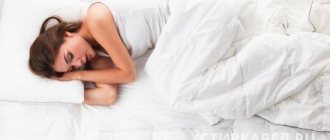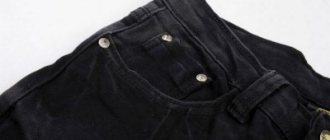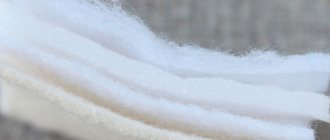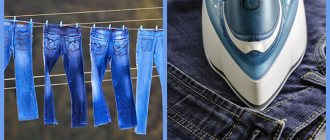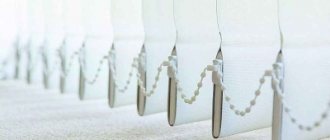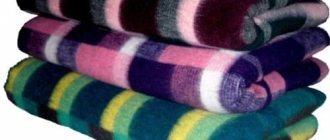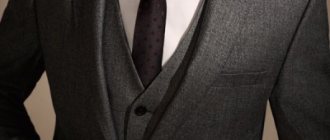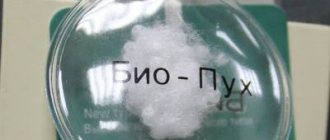Nowadays, not every housewife bothers herself with the question: how to starch laundry in a washing machine? This procedure is a thing of the past. There are several reasons for this. This is primarily due to the emergence of new washing technologies. Almost every family has smart washing machines and effective universal washing and rinsing products, which have taken away a huge part of the labor-intensive manual work.
Most washing machines have a “starching” function. However, some “conservative” housewives are not satisfied with this, and they want to process their laundry using outdated methods. But really, it’s much more pleasant to sleep on starched linen and at the same time feel the delights of fresh-smelling bedding that squeaks from cleanliness.
Recommendations on how to starch fabric
Bedding that has undergone this treatment may chafe the skin. Therefore, you need to be able to properly starch home textiles in an automatic washing machine.
Adviсe:
- It is necessary to take into account the type of fabric. It is advisable to start starching cotton or linen products. Similar procedures are great for cambric, satin, chintz or calico. However, not every fabric can be starched without harm. Woolen home textiles should not be treated with paste. Synthetic fibers in an automatic washing machine also do not tolerate starch well. Such products may lose their natural colors;
- You need to choose the starch correctly. You can use rice, wheat, corn or any other starch you like. However, it will be most convenient to starch things with potato starch. This product is relatively cheap, thickens well and is bright white compared to corn starch;
- It is necessary to regulate the concentration of the substance. The technology for producing the solution is entirely determined by the material of the fabric being processed. You can starch bed linen in an automatic washing machine in three available ways: soft, medium, hard.
You can only starch clean things; before such a procedure, it is advisable to remove all stains from the bed linen. You can definitely use hydrogen peroxide to remove wine, grease, or coffee stains.
Preparing the paste
The starch solution is prepared from potato, corn, rice or wheat starch. The use of one starch or another does not matter, but it should be remembered that the potato solution can leave stains on white linen.
In addition, if prepared incorrectly, the fabric may acquire a yellowish-dirty tint. However, despite some disadvantages, most housewives still use potato starch. This is due to the fact that it has the following positive qualities:
- starch powder dissolves quickly with water;
- the powder is easy to prepare and can be easily brewed with boiling water;
- quickly acquires the required thickness;
- the linen takes on a pleasant color with a snow-white or pale blue tint.
Corn starch is practically no different from potato starch, but to obtain a high-quality paste, it should be boiled for 5-7 minutes. It does not leave yellow marks on fabrics.
Rice and wheat starch can be used in practice, but due to their relatively high cost they are not widely used. The procedure for preparing starch paste is as follows:
- First, the starch is diluted in cold water. The ratio of the volume of water to the amount of powder depends on the degree of starching (delicate, soft, medium, hard);
- if the starch is of poor quality (with a grayish tint), then after it has dissolved, it should stand for 10-20 minutes;
- floating particles of contaminants are merged with water;
- the remaining dirt on the top of the starch is removed with a spoon;
- Cold water is added to the purified starch and the contents are thoroughly mixed. For final cleaning, the diluted starch is filtered through a gauze filter;
- in another container, water is boiled, into which the purified paste is poured in a thin stream, with continuous stirring;
- The resulting mass is brewed over low heat. The process is considered complete if the paste takes on the appearance of transparent jelly;
- the prepared paste is given time to cool;
- The composition is checked for the absence of lumps. If they are present, then the paste is filtered through a fine sieve.
If it is not possible to prepare the paste with your own hands, then you can use household chemicals.
Currently, you can buy ready-made synthetic starch products in stores. Such formulations may be in the form of rinses, sprays or aerosols.
Liquids are used at the rinsing stage, and sprays and aerosols during the ironing period. The procedure for use is described in the instructions for use. Before direct use, the starch mass is diluted with cold water to the required concentration.
Helpful Tips:
- in order for the starched linen to acquire a bluish tint, blue is added to the paste;
- To ensure that the laundry acquires a glossy shine after ironing, add a spoonful of table salt to the solution. It will also protect laundry from freezing when drying in frosty air;
- To prevent laundry from sticking to the sole of the iron, add a few drops of turpentine to the starch paste.
In what ways can you starch things?
In practice, different amounts of solutions are used in an automatic washing machine. However, in order to starch bed linen in a suitable way, you will need to use the same sequence of actions:
- Starch is added to a small container and filled with a small amount of water;
- It is necessary to stir the ingredients until a homogeneous mass without lumps is formed;
- You need to boil some more water;
- Concentrated starch is gradually added to boiling water, everything is stirred, and then the fire is turned off;
- The resulting paste should cool slightly.
This is the entire procedure for preparing a product that allows you to starch bed linen at home.
Types of starching
There are three types of starching, which vary depending on the intensity of the procedure:
- Soft starching,
- Medium starching
- Hard starching.
For example, underwear, bed linen, bedding, light blouses and dresses are softly or very softly starched; Men's shirts and tablecloths are moderately starched, but hard starching is used in the case of partial processing - for cuffs, collars and other elements of clothing. At the same time, the amount of starch per liter of water varies.
Useful tips
Let's look at some useful tips:
- To make the white fabric shine beautifully, you can add a little table salt to the solution;
- It is extremely undesirable to starch fabric with floss embroidery. The fibers will shed and become tangled with each other;
- You need to add a little turpentine to the paste so that the sole of the iron does not stick to the fabric during ironing;
- It is highly undesirable to dry starched items in the cold. It is better to hang starched bed linen indoors.
Now anyone can figure out how to starch bed linen in an automatic washing machine.
Conventional starch processing
The technology algorithm for conventional (manual) starch processing is as follows:
- starch paste is prepared;
- the starch solution is heated to a temperature of 30-35 degrees and the laundry is immersed in it. At the same time, it must be fluffy, otherwise the processing of the fabric will be uneven, and its individual sections will be unsaturated;
- After impregnation, the laundry is left for 10-20 minutes to soak. This process can be accelerated by vigorous rinsing;
- the resulting creases and folds in the fabric are removed. To do this, the laundry is wrung out by hand, followed by vigorous shaking;
- dry the laundry in a straightened state.
To ensure that the laundry is ironed well, it is recommended not to twist it too much after starching and not to overdry it.
How can starch harm you?
Some experienced housewives do not recommend starching laundry either in a washing machine or by hand. Their fears are truly justified. When bed linen is starched, air does not pass through the fabric well because the spaces between the fibers become clogged with the substance.
As a result, the fabric does not absorb moisture well and does not allow the body to breathe. This contributes to feelings of discomfort during sleep. In addition, there is a high probability of mold or mildew formation. Therefore, it is highly undesirable to starch bedding.
Conclusion
Thus, starching laundry is not at all difficult: the time is minimal, the costs are insignificant. However, it is advisable to decide whether such a procedure is necessary, or to be content with the pleasant sensations, or to take advantage of doctors’ recommendations and refuse starch processing.
On the other hand, if manual or machine processing seems too labor-intensive, then you can do it easier. Prepare a weak starch solution, pour it into a spray bottle and spray the laundry before ironing.
Let's sum it up
Whether to use folk remedies or not is everyone’s personal choice. On the one hand, the time when such methods were used is long gone.
But, on the other hand, it is precisely such methods that allow you to achieve excellent results. It is worth noting the financial side, it is affordable, although it requires a small investment of time.
And perhaps the most important plus is environmental friendliness and safety. The products that the market offers are, to one degree or another, not entirely harmless.
They can cause allergic reactions, especially in children. Therefore, there are more than enough advantages to try and make sure you make the right choice.
Why is this procedure carried out?
Anyone who has starched things once will never give it up again. And no matter what the latest fabric care products the market offers, there is simply no alternative.
Let's look at this in more detail, this procedure does not apply to fabric cleaning, it is an additional processing of clean linen, which provides:
- Protective film. If bed linen is treated with starch, it acquires a protective layer, a film, which further protects the fabric.
- Great shape. When such treated fabric is ironed, it will retain its shape for a long time and will not wrinkle.
- Correct structure. The fact is that the protective layer prevents dirt, sweat, and dust from penetrating the fabric.
- Washing quality. When washing powder comes into contact with starch during washing, it quickly dissolves and takes away all the dirt with it.
- Durability. If you regularly process things, they will retain their original structure for a long time and will last much longer.
- Snow whiteness. It is no secret that it is very difficult to maintain the original whiteness; after the first wash, the laundry begins to fade and acquire a grayish tint. But it is through starch treatment that you can achieve that incredibly white effect.
- Freshness. The cleanest laundry that remains fresh, has a pleasant smell and is all the result of starch.
To summarize this point, we can say with complete confidence that this substance is simply irreplaceable and has many advantages.
Hard starching
The hard method is used if it is necessary to starch a petticoat, which must hold several skirts on top, or to make a collar with cuffs or some decorative element particularly rigid and resistant.
The solution recipe has changed:
- a teaspoon of borax and dilute in a glass of hot water and cool to room temperature;
- Dilute 50 grams of starch (approximately 2 level tablespoons) in a glass of cold water;
- boil a liter of water and pour diluted starch into it;
- Pour borax into the brewed starch solution, mix everything and leave for 2 hours.
If you need to prepare 2, 3 or more liters of solution, then you proportionally increase the amount of borax and starch.
Why starch textiles, and when should you not do it?
[turbobutton]
During the process of starching the fabric, its fibers are impregnated with polysaccharides. A thin film is formed on the surface of the threads, which increases their density and elasticity. As a result of starching, textiles hold their given shape well, bleach, crumple less and “creak” when touched. In addition, products stay clean longer and are easier to wash, since the starch film repels dirt and does not allow it to penetrate deeply into the fibers.
The disadvantage of starching is the fact that it reduces the breathability of the fabric. It is not recommended to process:
- summer clothes (it is advisable to starch only individual parts);
- underwear (they may become stiff and cause discomfort);
- dark products (starch can change their shade);
- synthetic fabrics (the solution is not fixed to their fibers);
- things embroidered with floss threads (they can stick together and lose their shine).
Important: Only clean things are starched. If there are stains on the product, they must first be removed.
